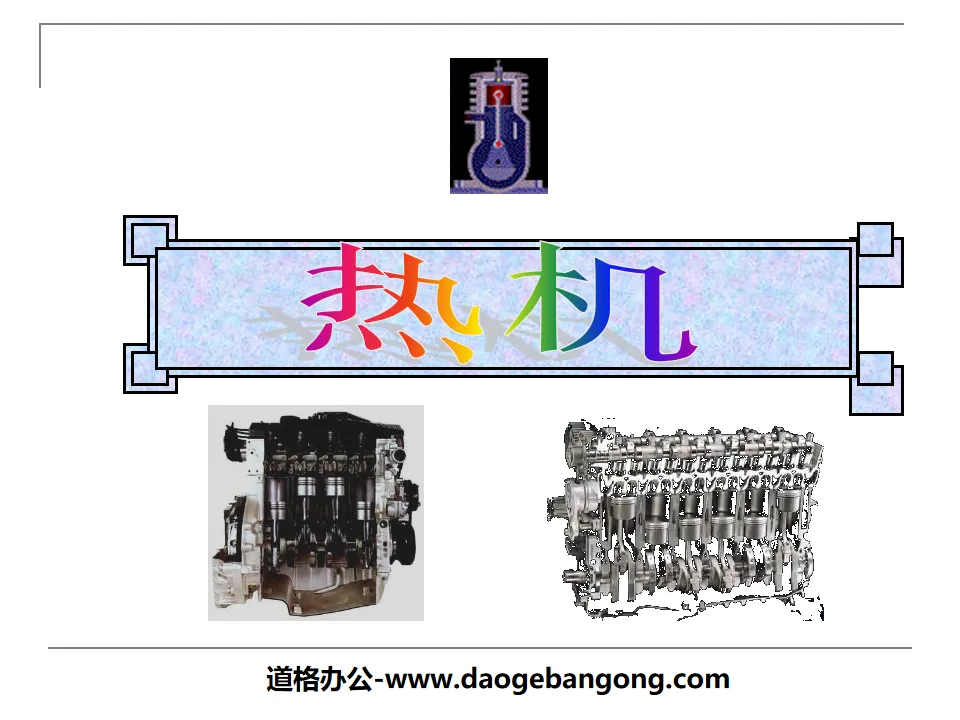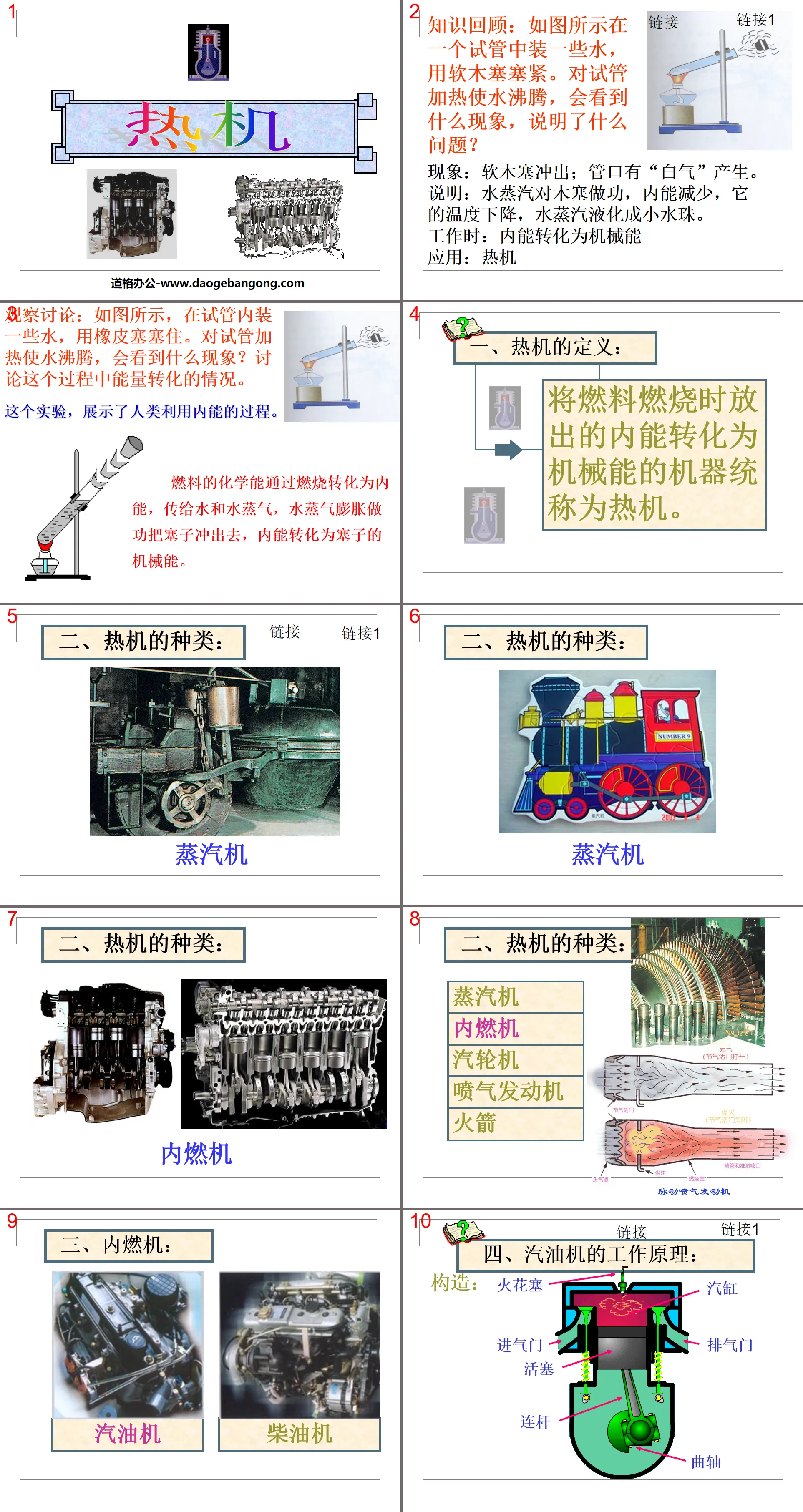People's Education Edition Physics for Grade 8, Volume 2
People's Education Edition Physics for Grade 8, Volume 1
People's Education Edition Ninth Grade Physics Complete Book
Shanghai Science Edition Ninth Grade Physics
Shanghai Science Edition 8th Grade Physics
Beijing Normal University eighth grade physics volume one
Lu Jiao Edition Ninth Grade Physics Volume 2
Beijing Normal University Ninth Grade Physics Volume 1
Lu Ke Edition High School Physics Compulsory Course One
Lu Jiao Edition Ninth Grade Physics Volume 1
Guangdong and Shanghai Edition Ninth Grade Physics Volume 1
People's Education Press High School Physics Compulsory Course II
Beijing Normal University Ninth Grade Physics Volume 2
Lu Jiao Edition Eighth Grade Physics Volume 2
Lu Jiao edition eighth grade physics volume 1
Guangdong and Shanghai Edition Ninth Grade Physics Volume 2

| Category | Format | Size |
|---|---|---|
| People's Education Edition Ninth Grade Physics Complete Book | pptx | 6 MB |
Description
"Heat Engine" Utilization of Internal Energy PPT Courseware 3
Knowledge Review: Fill a test tube with some water as shown in the picture and seal it with a cork. When the test tube is heated to boil the water, what will happen and what problem does it indicate?
Phenomenon: The cork breaks out; "white gas" is produced at the mouth of the tube.
Explanation: Water vapor does work on the cork, its internal energy decreases, its temperature drops, and the water vapor liquefies into small water droplets.
When working: Internal energy is converted into mechanical energy
Application: Heat engine
1. The structure of the gasoline engine; the main structures of the gasoline engine are as follows:
The main body is ____, which contains ____. It is connected to ____ through ____. There are ____ and ____ on the upper part and ____ on the top.
2. Working principle: The chemical energy of the fuel is converted into internal energy through combustion, and the internal energy is converted into mechanical energy through work. This enables the machinery to gain power.
Two nouns:
1. One stroke:
The process of the piston moving from one end of the cylinder to the other as it reciprocates within the cylinder.
2. A work cycle:
These four strokes are called a working cycle of the engine.
suction stroke
Before starting work, the piston is located at the upper end of the cylinder, and the intake and exhaust valves are closed. When working, the piston moves from top to bottom, the intake valve opens, and the exhaust valve remains closed. As the volume in the cylinder increases and the pressure decreases, the mixture of air and gasoline is sucked into the cylinder.
Compression stroke
When the piston moves to the bottom, it begins to move upward. At this time, both the intake valve and the exhaust valve are closed, and the mixed gas is forcibly compressed, causing the temperature of the gas to increase and the pressure to increase. Mechanical energy is converted into internal energy.
power stroke
Although the temperature is higher at the end of compression, it fails to reach the ignition point of the fuel. At the moment when the compression stroke ends, the spark plug generates an electric spark, causing the fuel to burn violently, producing high-temperature and high-pressure gas. The high-temperature and high-pressure gas pushes the piston to move from up to down, and drives the crankshaft to rotate through the connecting rod. The internal energy of the high-temperature combustion gas is converted into the mechanical energy of the piston.
Want to discuss:
1. Among the four strokes, which strokes undergo energy conversion? How to convert?
2. Which stroke gives the car power?
3. Which stroke discharges the exhaust gas from the car?
knowledge application
1. The working process of a four-stroke gasoline engine consists of four strokes ( ).( ).( ).( ).
2. In a four-stroke gasoline engine, the ( ) stroke converts mechanical energy into internal energy, and the power stroke converts ( ) energy into ( ) energy.
3. What is sucked into the cylinder of a gasoline engine is ( ), and the ignition method is ( ).
4. The three auxiliary strokes of the four-stroke gasoline engine are completed by the flywheel ( ).
5. The speed of the flywheel of a four-stroke gasoline engine is 3600R/min, then it does external work ( ) times per second.
Classroom testing:
1. For a four-stroke gasoline engine, the crankshaft speed is 1200r/min. Then the gasoline engine does __ times of work per second, has __ strokes, and the flywheel rotates __ times.
2. A heat engine is a machine that converts internal energy into __ energy; a working cycle of a heat engine consists of __ strokes, of which the __ strokes of the heat engine are shown in the figure.
3. There are several opinions on the working process of four-stroke gasoline engines:
①In the power stroke, mechanical energy is converted into internal energy
②During the power stroke, internal energy is converted into mechanical energy
③Only the power stroke is the gas doing work externally.
④In the gasoline engine, gasoline is sucked into the cylinder during the suction stroke. The above statement is correct ( )
A. Only ②③ B. Only ①③ C. Only ②④ D. Only ②③④
Want to discuss:
What are the similarities and differences between the working processes of gasoline engines and diesel engines?
Same point
1. The basic structure and functions of the main components are similar.
2. Each workpiece cycle goes through four strokes: suction stroke, compression stroke, power stroke, and exhaust stroke.
3. Among the four strokes, only the power stroke performs external work, and the remaining three strokes are completed by the inertia of the flywheel.
4. In one working stroke, the piston reciprocates twice, the flywheel rotates twice and does work once.
difference
1. The structures are different: a gasoline engine has a spark plug on the top of the cylinder, while a diesel engine has a fuel injector on the top of the cylinder.
2. Different fuels: the fuel of gasoline engines is gasoline, while the fuel of diesel engines is diesel.
3. The intake of air is different: the gasoline engine inhales a mixture of gasoline and air, while the diesel engine only inhales air.
4. Ignition is different: gasoline engines have spark-ignition ignition, while diesel engines have compression-ignition ignition.
Keywords: Utilization of internal energy teaching courseware, heat engine teaching courseware, New People's Education Edition ninth grade physics PPT courseware, ninth grade physics slide courseware download, utilization of internal energy PPT courseware download, heat engine PPT courseware download, .ppt Format
For more information about the "Utilization of Internal Energy in Heat Engines" PPT courseware, please click on the Utilization of Internal Energy in Heat Engine ppt ppt tab.
"Heat Engine and Social Development" Internal Energy and Heat Engine PPT Courseware 3:
"Heat Engines and Social Development" Internal Energy and Heat Engines PPT Courseware 3 Teaching Objectives 1. Know the working principle of heat engines and energy conversion. 2. Understand the working principle and working process of gasoline engines. 3. The difference between gasoline engine and diesel engine. 4. Improve thermal engine efficiency. Test Preview 1 Understand...
"Heat Engine and Social Development" Internal Energy and Heat Engine PPT Courseware 2:
"Thermal Engine and Social Development" Internal Energy and Thermal Engine PPT Courseware 2 1. Heat engine Steam engine Diesel engine Gas turbine Gasoline engine Jet engine Rocket engine. 2: Working process (1) When the internal combustion engine is working, the four strokes start over and over again. In a working cycle of the internal combustion engine...
"Heat Engines and Social Development" Internal Energy and Heat Engines PPT Courseware:
"Thermal Engine and Social Development" Internal Energy and Heat Engine PPT Courseware Learning Objectives 1. Understand the energy conversion process during the operation of heat engines. 2. Understand the working principle and working process of gasoline engines and improve your ability to read pictures. 3. Through the study of issues such as heat engine efficiency and heat engines and the environment...
File Info
Update Time: 2024-11-21
This template belongs to Physics courseware People's Education Edition Ninth Grade Physics Complete Book industry PPT template
"Heat Engine" Utilization of Internal Energy PPT Courseware 3 Simple campus recruitment activity planning plan summary enterprise and institution recruitment publicity lecture PPT template is a general PPT template for business post competition provided by the manuscript PPT, simple campus recruitment activity planning plan summary enterprise and institution recruitment promotion Lecture PPT template, you can edit and modify the text and pictures in the source file by downloading the source file. If you want more exquisite business PPT templates, you can come to grid resource. Doug resource PPT, massive PPT template slide material download, we only make high-quality PPT templates!
Tips: If you open the template and feel that it is not suitable for all your needs, you can search for related content "Heat Engine" Utilization of Internal Energy PPT Courseware 3 is enough.
How to use the Windows system template
Directly decompress the file and use it with office or wps
How to use the Mac system template
Directly decompress the file and use it Office or wps can be used
Related reading
For more detailed PPT-related tutorials and font tutorials, you can view: Click to see
How to create a high-quality technological sense PPT? 4 ways to share the bottom of the box
Notice
Do not download in WeChat, Zhihu, QQ, built-in browsers, please use mobile browsers to download! If you are a mobile phone user, please download it on your computer!
1. The manuscript PPT is only for study and reference, please delete it 24 hours after downloading.
2. If the resource involves your legitimate rights and interests, delete it immediately.
3. Contact information: service@daogebangong.com
"Heat Engine" Utilization of Internal Energy PPT Courseware 3, due to usage restrictions, it is only for personal study and reference use. For commercial use, please go to the relevant official website for authorization.
(Personal non-commercial use refers to the use of this font to complete the display of personal works, including but not limited to the design of personal papers, resumes, etc.)
Preview










